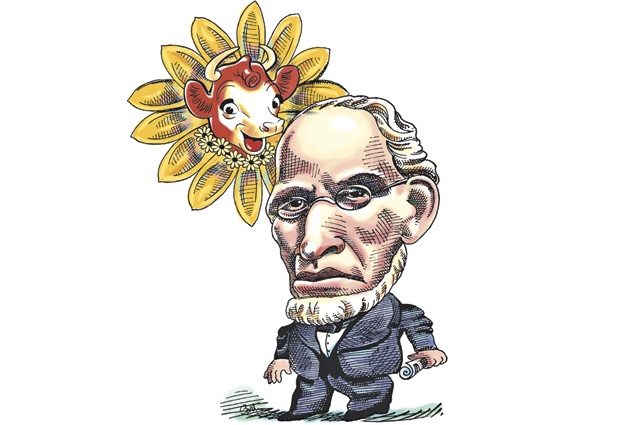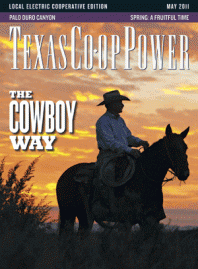Like a lot of people known primarily for one thing, Gail Borden Jr. did a lot of things besides that for which he is most famous: inventing the process of preserving and canning milk. That invention made his fortune and his reputation, but the “Dairyman to the World,” as he was called by one biographer, traveled a strange and winding road to the land of prosperity and posterity.
Borden, born in New York in 1801, made his way to Texas in 1829 with little more than a year’s worth of formal education in Indiana, where he studied surveying. He and his brother Tom had met Stephen F. Austin in New Orleans in 1821, where Austin told the brothers of the free land that Mexico, of which Texas was a part, was giving away to families willing to settle the Texas wilderness. Tom took Austin up on the offer, but his brother settled in Mississippi for seven years because he believed the climate there would be good for a troubling cough from which he had suffered for most of his life. Gail Borden Jr. brought his wife, Penelope, and their children to join Tom and Gail Sr. in Texas, where Gail Jr. took over from his brother as chief surveyor for Austin’s colony.
Even without his condensed milk as a legacy, Gail Borden Jr. would still warrant at least a mention in the state’s history. He published one of the state’s first newspapers, the Telegraph and Texas Land Register—which on March 17, 1836, was the first to report the fall of the Alamo 11 days earlier. And he is credited by some with writing the headline that became the rallying cry for Texas independence: “Remember the Alamo!”
Under the Republic of Texas, President Sam Houston appointed Borden collector of customs for the Port of Galveston, where he served a little more than a year before Mirabeau Lamar, who succeeded Houston, removed him for political reasons, appointing a lifelong friend to the post. Borden returned to the position when Houston served his second term as president of the Republic, but resigned after a spat with Old Sam over the valuation of Texas paper money, known as “exchequer bills.”
After Penelope died during a yellow fever epidemic in Galveston in 1844, Borden began to experiment with ways to preserve food, specifically meat, without refrigeration. After much trial and error, he boiled a side of beef down to just a few pounds and mixed it with flour to create what was billed as “the wonderful meat biscuit from Texas.” He sold a supply to explorer Elisha Kane for his early 1850s exploration of the Arctic, but six Army officers reported that the biscuit had a “disgusting” flavor and was prone to produce headaches and nausea in people who ate it.
Returning home on a ship from England in 1851, Borden was distressed by the crying of ill and hungry babies who had no access to milk because the rough seas had either killed the ship’s cows—brought onboard to provide fresh milk—or made them too seasick to milk. He vowed to find a way to preserve milk and dedicated the next two years to devising and perfecting his method.
Borden’s idea was to retain the fat but remove the water by evaporating it in a vacuum pan to prevent contamination. Key to the process was the exclusion of air during the evaporation process. Borden was the first to realize that milk is a living fluid that begins to decompose as soon as it leaves the cow, an observation that was at the heart of later scientific breakthroughs like pasteurization.
After several rejections, the U.S. Patent Office approved Borden’s design in 1856 after the editor of Scientific American and others lobbied on Borden’s behalf. Initial attempts to market the product from New York failed, mainly because most people in 19th century America had their own dairy cows and didn’t want or need canned milk. With the help of benefactor Jeremiah Milbank, Borden persisted. The Union Army ordered 500 pounds of condensed milk when the Civil War started in 1861 and eventually ordered all the condensed milk that Borden could produce. He returned to Texas in 1867 a wealthy and respected man.
The town of Borden in Colorado County, west of Houston, where he settled for a time after his return, is named for him. Two other namesakes lie southeast of Lubbock: Gail, the seat of Borden County. Gail Borden Jr. died in Borden at the age of 72 from pneumonia, and his body was shipped by private train car to White Plains, New York, for burial in the Woodlawn Cemetery. The epitaph on his grave monument sums up his life pretty well:
“I tried and failed,
I tried again and again, and succeeded.”
——————–
Clay Coppedge is a regular contributor to Footnotes in Texas History.


